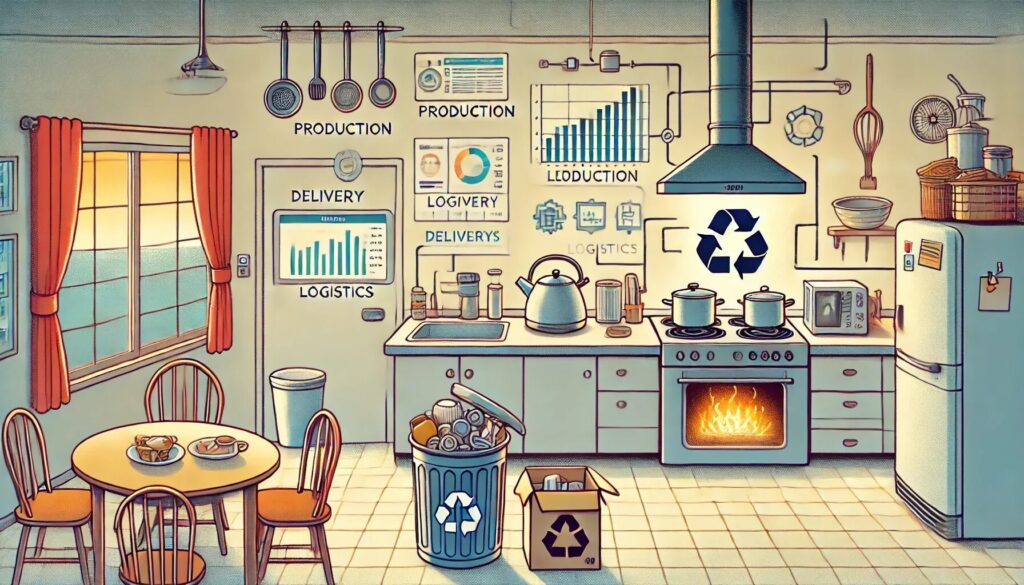1. Introduction
The kitchen is not only a space that supports household dining, but also an important area that reflects the industrial structure and challenges of society as a whole. The sequence of procurement, cooking, and consumption processes harbors contemporary social issues including environmental problems, labor burden, and gender role distribution. This article examines modern challenges visible through the kitchen and their solutions.

2. Practical Points and Specific Examples
- **”Environmental Issues and Kitchen Relations”**Daily kitchen activities are closely linked to environmental issues. For instance, food waste is a major challenge caused by household consumption. When refrigerator content management is insufficient, expired ingredients often end up being discarded. Additionally, plastic packaging and disposable products are exacerbating waste problems. To address this, we can reduce environmental impact by choosing recyclable packaging and introducing household composting systems for food waste.
- **”Inequality in Household Chores”**The burden of housework still tends to fall disproportionately on women, with kitchen activities being particularly symbolic of this issue. For example, even in dual-income households, women often remain primarily responsible for meal preparation and cleanup, which can disrupt work-life balance. Resolving this issue requires making household tasks visible, utilizing cooking appliances and meal kits, and establishing fair distribution through discussions between spouses.
- **”Food Distribution and Labor Environment”**Ingredients that reach our kitchens go through long distribution channels, behind which lie labor environment issues. For instance, when wages and working conditions for workers in food production and logistics are inadequate, it affects our households. Purchasing locally sourced ingredients and choosing fair trade products is a step toward addressing these challenges.
- **”Technology and the Future of Kitchens”**Technological innovations like cooking appliances and online services are reducing the burden of kitchen work. However, new challenges are also emerging. For example, high-performance cooking appliances can have high energy consumption, potentially increasing environmental impact. It’s important to consider the balance between utilizing technology and solving these challenges.
3. Points of Caution and Tips for Improvement
To address the challenges reflected in the kitchen, it’s important to accumulate small improvements in daily life. For example, we can create positive societal impact by planning food purchases to reduce waste and choosing fair trade products and eco-friendly packaging. Additionally, regular family discussions about sharing household chores can lead to household management that satisfies everyone.
4. Summary and Next Actions
The kitchen is a place where we can directly experience contemporary social issues through housework. In your next cooking or shopping session, be conscious of making choices that consider the environment and fair distribution of household chores, creating opportunities for positive change from household to society. These small initiatives will surely be the first step toward a better future.




